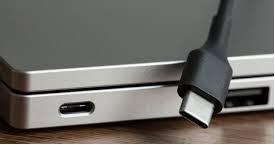FlatCam – Miniature Camera – Sensor Chip with Grid Coded Mask
According to Rice News, a miniature camera developed out of the Rice University labs comprises of a sensor chip with grid like coded mask that enables various channels of light to reach the sensor. FlatCam is said to be similar to a microchip, which utilises computer algorithms to process whatever is detected by the sensor after which it tends to transfigure the measurements into videos and images.
An assistant professor of electrical and computer engineering at Rice, Veeraraghavan has commented that `as traditional cameras get smaller, their sensors also tend to get smaller and this means that they collect very little light. The low light performance of a camera is tied to the surface space of the sensor.
However since all the designs of the cameras are generally cubes, surface space is tied to thickness. The design decouples the two parameters, offering the ability to use the enhanced light-collision potential of large sensors with a really thin device’.
The FlatCam could ultimately be turned into wearable, foldable as well as disposable cameras. However, the team state that photographers would be more likely to stay with lens-based systems.
Several Possibilities – Moving from Cube Design to a Surface
Developers state that the camera would be a necessary step in other applications. Baraniuk the Victor E. Cameron Professor of electrical and Computer engineering states that moving from a cube design to a surface without forgoing performance, gives rise to several possibilities.
He added that they can make curved cameras, or wallpaper which is actually a camera and one can have a camera on credit card or a camera in an ultrathin tablet computer.The model tends to produce 512-by-512 images, a resolution which the researchers are expecting to increase as it tends to progress.
The models do not seem to have viewfinders, however if necessary, researchers state that a cell phone screen could someday do the job. Rice alumnus and assistant professor of electrical and computer engineering at Carnegie Mellon University, co-author Aswin Sankaranarayanan states that smart phone have already featured powerful computers and hence we can imagine computing at least a low resolution preview in real time.
Heritage Shared with Lens-less Pinhole Camera
FlatCam tends to share its heritage with lens-less pinhole camera though instead of a single hole it has a grid-like coded mask placed close to the sensor. Each aperture enables a slightly different set of light data to extentto the sensor. Raw data sent to the back end process, presently a desktop, is organized into an image and just as larger light field cameras; the picture tends to get focused to different depths after the collection of the data.
The lead author of the paper is Rice postdoctoral researcher, Rice graduate Salman Asif together with co-author Ali Ayremlou. Rice alumnus Sankaranarayan is now an assistant professor of electrical and computer engineering at Carnegie Mellon University while Baraniuk is the Victor E, Cameron Professor of Electrical and Computer Engineering and the assistant professor of electrical and computer engineering at Rice is Veeraraghavan.
The research team would be delivering a talk with regards to its work at the Extreme Imaging Workshop on December 17 in Santiago, Chile and published paper is also made available through ArXiv, an online service








